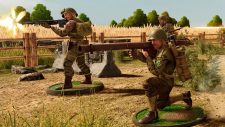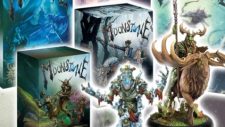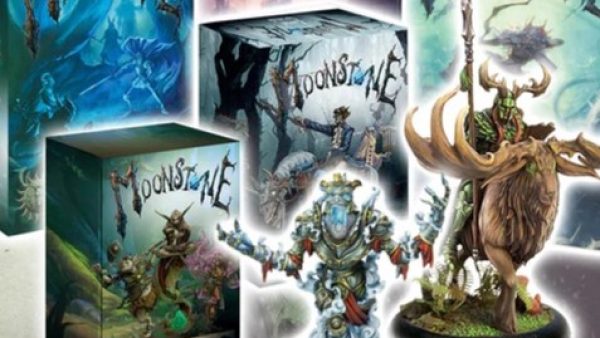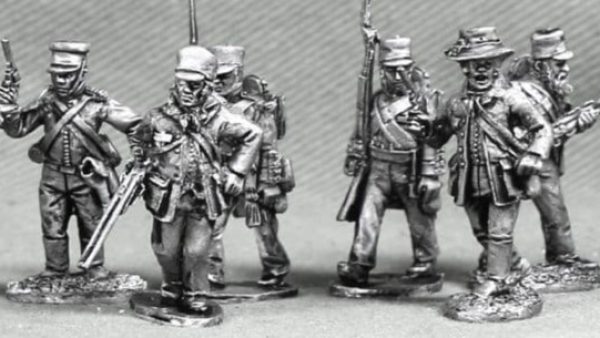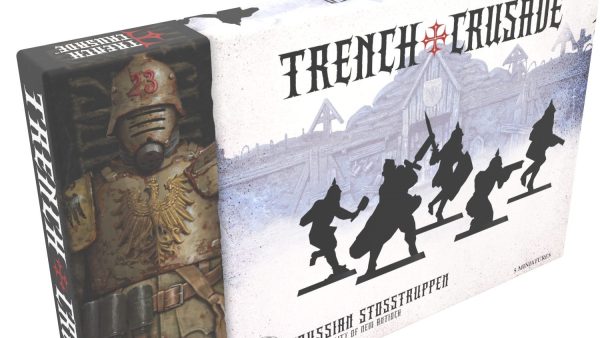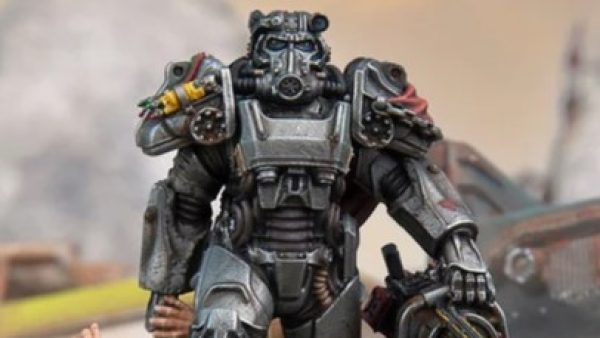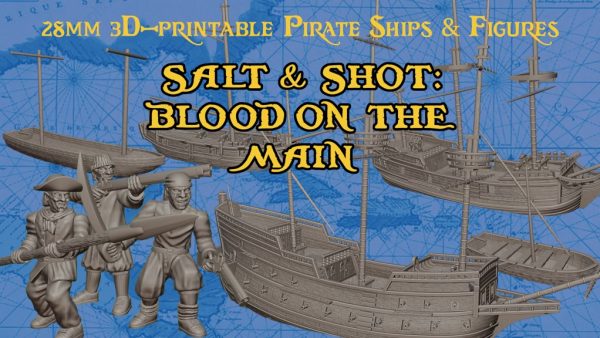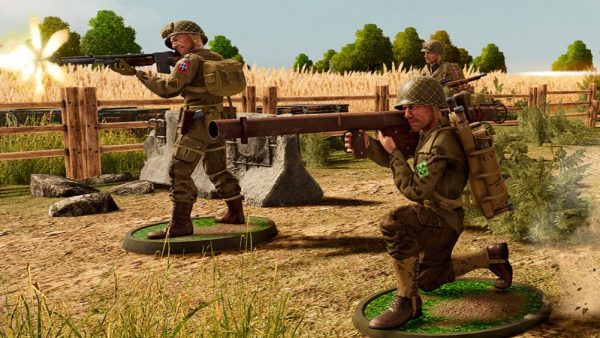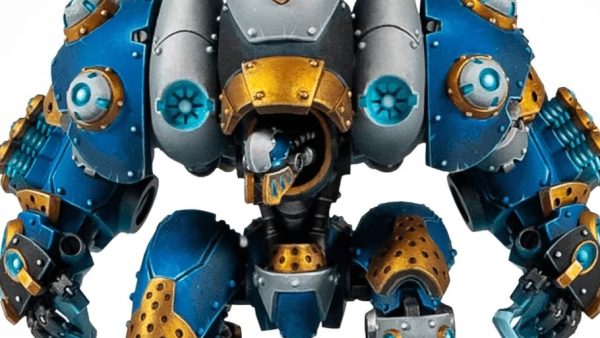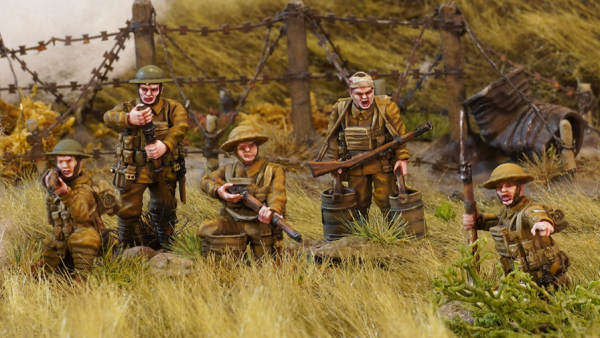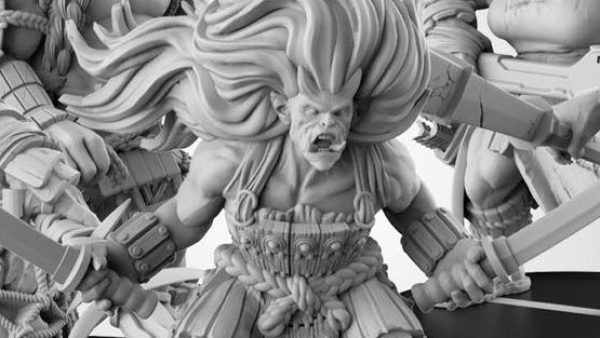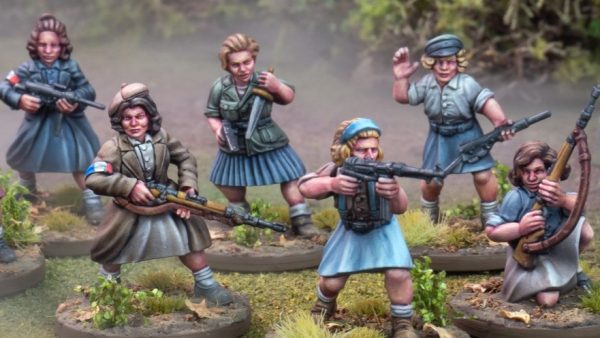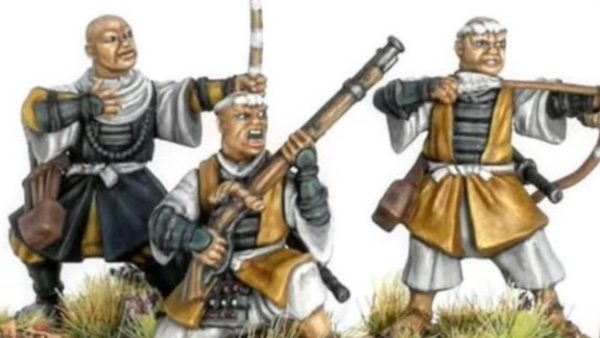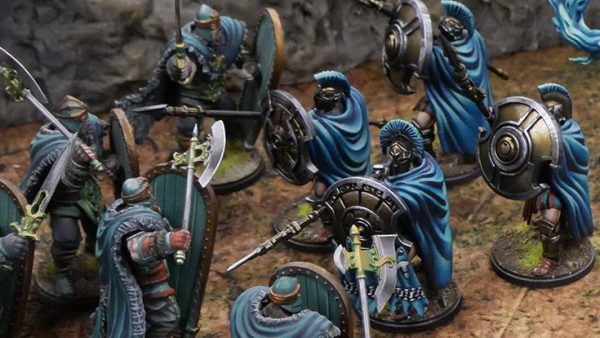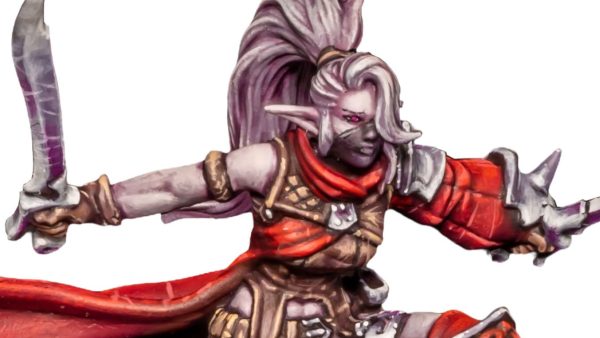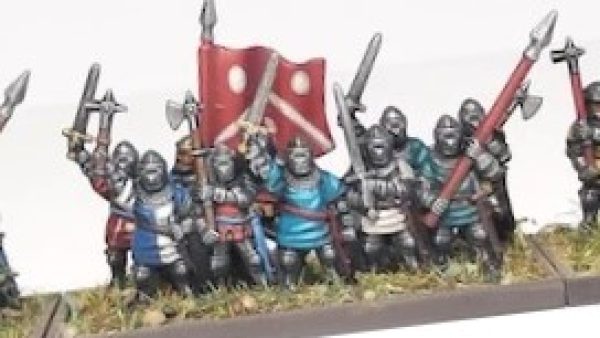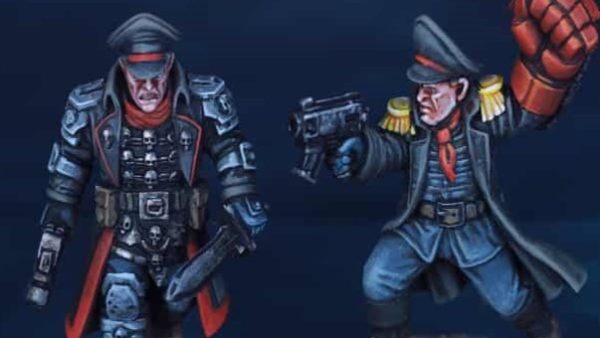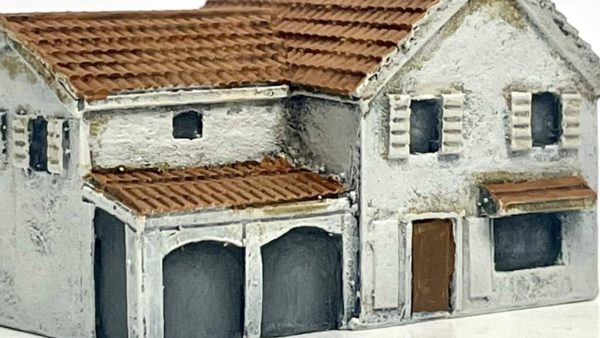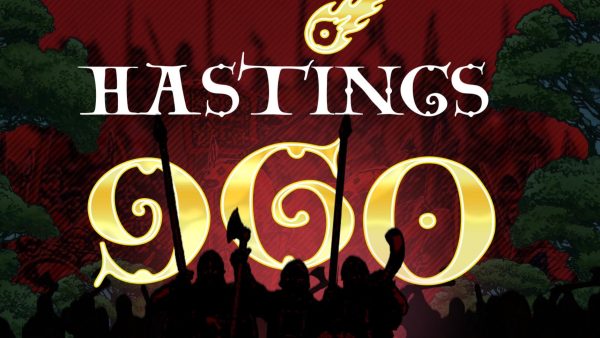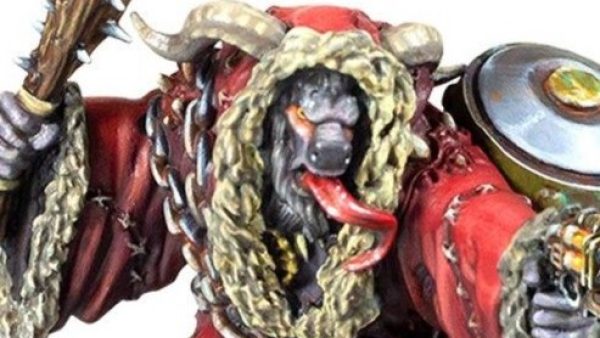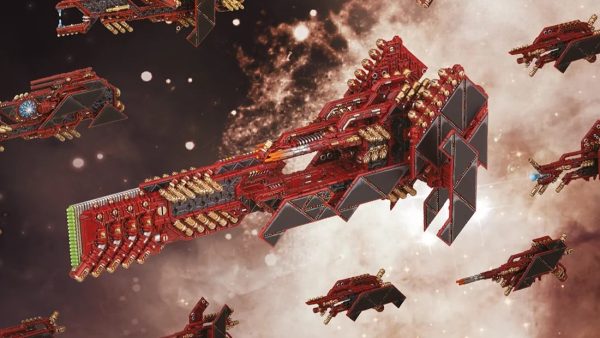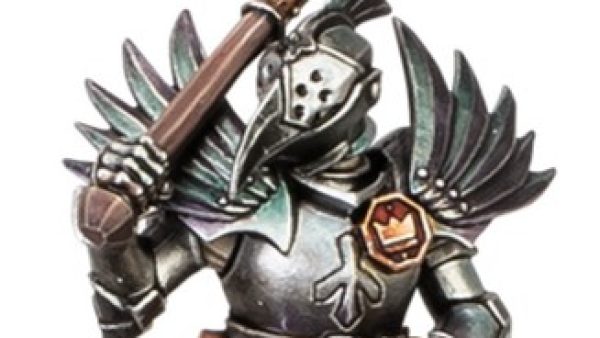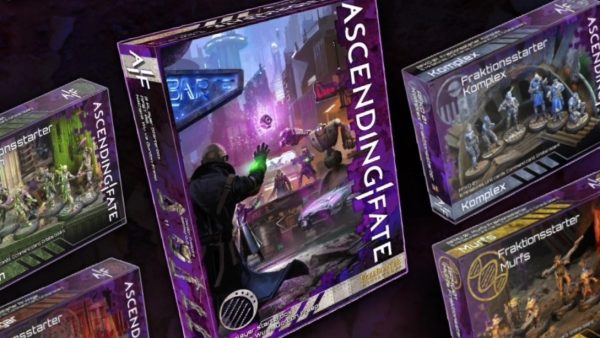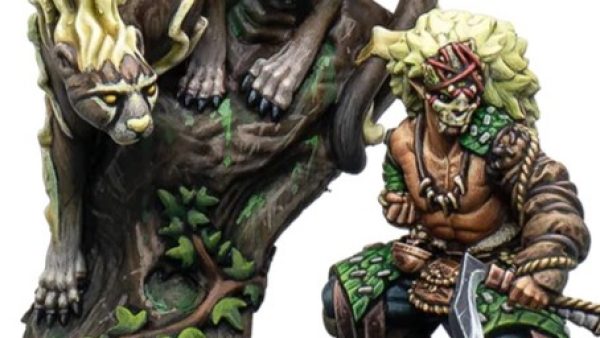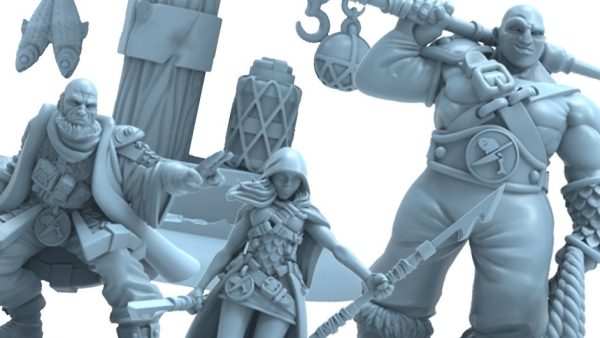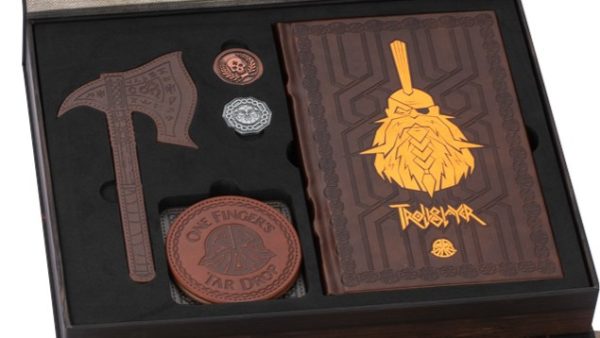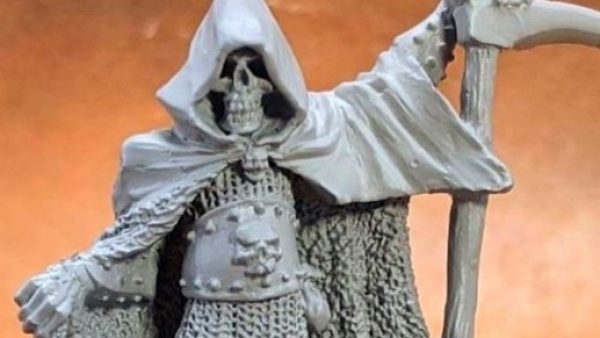Home › Forums › Historical Tabletop Game Discussions › Continued Explorations of Normandy Wargaming
Related Games:
Tagged: historical, Normandy, Oriskany
- This topic has 59 replies, 6 voices, and was last updated 6 years, 4 months ago by
jamesevans140.
-
AuthorPosts
-
June 21, 2019 at 4:44 pm #1407258
No worries at all on the explosion graphics, smoke, etc. Super fast, super easy, and anything that helps more people game is a win-win.
I am a little amused at the moment that hexes are appearing on my table and now soon computer graphic will be on it as well.
What else can I say …
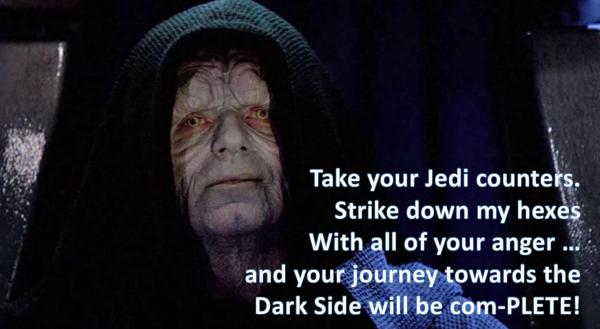
What I liked about the opening of this PL game is that it demonstrated just how easily things could have gone for the British and Canadians.
Yeah, when @amphibiousmonster played his Canadians in the Juno Beach monster PL game in 2015, he had a few rough spots like this as well. Not quite as bad, but definitely a nasty day at the beach.
[DD tanks at Omaha] So it loses blame and just becomes sad with the terrible choices that had to be made on the spot.
Yeah, material I’m reading now has the “blame” more on the battalion and regimental commanders, who ignored the warnings of the Navy officers on those drop ships … who wanted to release the tanks much closer to the shore. When looking at sea conditions and nautical factors, why listen to the Navy, right?
Scottish DD tank commander.
I did not hear about that one. Great!
They cost about an average weeks wages back then at $89 a pop.
That was the price of the game in those days? That is really expensive. A box set of Panzer Leader cost you $10 at the time.
It was vital this game we got to known the beach sectors well, Easy, Red, etc.
Yeah, the beaches are set up by letters of the alphabet (Charlie, Dog, Easy, Fox for Omaha – Item, Jig, King for Gold, etc). And then in each beach (you certainly know this, but for others reading) these are subdivided into a Green (west) and Red (east) sector, sometimes with a “White” for a center section, depending on width of the assault sector and planned troop densities.
One thing I find interesting is how forgotten these bloody beaches would have been if the A-bomb had not come along and the “X-Day” (not D-Day) invasions of Japan had been forced (Operation Coronet, October 1945 – Kyushu, followed by Operation Olympic, March 1946, Honshu). Those beaches were named for American car manufacturers, there would be no Saving Private Ryan movie at “Dog Green” – But “Oldsmobile Red,” “Buick Green,” and “Cadillac White,” etc.
Quality of German troops at the beachheads: So what I’m finding is that there is only one fully German, 1st-line division at Normandy, mostly at Omaha, with one regiment set up with a wing covering part of Gold. This is the 352nd, of course. After that you have units like the 709th at Utah, 711th at Juno and Sword, and 716th also at Omaha. These were “static” infantry divisions, usually with at least one “Ost” battalion of Belarussians or Ukrainians, also included ethic-German Poles or contingents from Baltic states. One photo has troops that were clearly former Red Army POWs that look straight up Chinese (I’m assuming Mongolian heritage?)
One of these Ost battalions was actually in action on that first day, the 441st, part of the 716th Infantry, with units at both Gold and Juno, I think.
The battalions of II. Regiment / 716th Static Infantry at Omaha Beach, however, had basically been “taken over” by 352nd, who were now responsible for training and equipment. So yes, there ARE 716th “static” infantry units at Omaha. They are NOT “Ost” battalion conscripts. They ARE “improved” by being added to the 352nd. However, they are still not full-scale first-line troops like the other regiments of the formal 352nd. Just the details and nuances I’ve been sunk into while building the Omaha Beach mega game. I honestly thought EVERYONE there was 352nd, and TECHNICALLY, they were. Just not ORIGINALLY 352nd.
German organizations are always so much fun.
American refusals to use funnies: Yeah, this is a thing. 🙁 The Americans had a bad habit through most of World War II about just not listening to the British. Of course it went both ways, but the American attitude was often along the lines of “if you know what you were talking about, you would’ve handled this mess already and we wouldn’t even BE here … AGAIN.”
There is merit to that outlook … but not on a battlefield. And this went all the way back to Sidi Bou Zid / Sbietla / Kasserine Pass.
Even when the Americans came up with “funnies” of their own later in Normandy, I’m talking about the Sherman hedgerow cutters, that had to come from an American T5 sergeant who literally grabbed some I-Beam scrap and welded that shit to the front of a tank. Sometimes the War Department just didn’t seem to care about the equipment with which they were sending our people into combat.
M4 Shermans with Wading Kits: To the Americans’ credit, these actually did work better than the DDs that day, at least on the American beaches.
Soviet “eras” and tanks: There ARE subtle differences, but not usually the kind that get picked up on a gaming table.
- The T-34a/b that was out in 1941 had the shorter-barrelled 76.2mm main gun, replaced by the T-34/c with the full-length gun.
- The T-34/85 comes out at the end of 1943 / beginning of 1944.
- There are also variants of the T-34/c (76) – mostly the shape of the turret and layout of the loader and commander’s hatches. The classic “Kursk” variant is definitely the 1943 model with the very hexagonal turret, the 1941/42 variants have the much more “teardrop” shaped turret.
- Assault guns / tank destroyers are big clue. SU-76 in 1942 / early 1943. SU-85s in August 1943. SU-152s in 1943, ISU-152s in 1944.
- KV1s also have the shorter guns in 41, longer 76.2 guns in later 41/42. There’s also uparmored variants, and that stupid pistol port drops off the back of the turret eventually.
- There are also big BIG differences in organization, what goes into a tank brigade, when the Soviet tank division goes extinct, when the guards brigades start showing up, followed by guards divisions, corps, and finally armies.
- In infantry games there is the progression from the Mosin-Nagant bolt action rifles to the the PPsH-41, the 43, the 44, etc.
So yeah, there really IS a progression you can really bake into a Soviet WW2 force. Most players just prefer to keep them as a “faceless red mass,” though, which is a friggin’ crime if you ask me.
To me you do seem happiest when bent over a map and the counters are at platoon level.
You know me well.
Then you maintain a friendship with guys like me on the other side of the world who’s day it’s almost your night.
Hey, we run games with @elessar2590 in Queensland. If you ever want to try a web game on a weekend, at least with Panzer Leader, just let me know. 😀
Life before the internet, did it really exist???
Ha! I remember when people used to write letters to the editors of Avalon Hill’s The General magazine. People would play the original 12 scenarios included in the first release of PanzerBlitz and write letters saying:
“Hold on, I’ve played all 12 scenarios and there are still counters and units I haven’t used. What gives?”
Dude, that’s because we want you to create your OWN SCENARIOS and gave you the pieces to do it! Hey, in 1971 that was a new idea.
June 22, 2019 at 7:21 am #1407388Thanks for a truly great reply @oriskany, I always appreciate you taking time out for them.
I was actually quite spoiled for the evolution of the Russian armored formation. Bryan Perrett in one appendix of his classic book Knights of the Black Cross gives a fantastic first look description of the units of the allies and axis forces units generally divided in the broad groupings of early, mid and late war. The I have a number of works by David Glantz, but primarily Kharkov 1942 and Enduring the Whirlwind by Gregory Liedtke. Ensuring the Whirlwind is best described as an accountants view on WW2 through the ledges, Also giving great org charts covering even units that Glantz glosses over. So I am fortunate to have enough resources to see this past of the war from both sides and a third view of expended resources.
But all seem a little light on describing the infantry divisions at the time of the battle they are describing. From my research on the Wars of Finland the Russians had a habit of creating heavy and light infantry divisions by taking a battalion from one division and assigning it temporarily to another. At least with the evolutions of the armored formation I can give you an almost at times bimonthly update on formation charges from division to brigade and independent brigade to tank corp.
For Izyum I hit a frustrating black hole concerning unit strength and status. Over November and December the Russians are making a lot of costly counter attacks across the majority of the Front line, some are tiny and a few are large. Then the Russians take a moment to breath and start counter attacking in mid January. Are the infantry just chewed up units being thrown back in, have they been rebuilt or are they fresh units. This is where I am struggling to get back to the real Russian Army. As you know troop quality has a big impact FoW. I am probably over thinking this but I am attempting to achieve the following.
1. Meet Izyum, the Russians were kicking some goals in Jan 42 and learning.
2. Demonstrate the Russians tried different units and yes you can leave Moscow and leave the T-34’s and KV-1’S at home and win.
3. Get to know your forces that are available to you.
4. Cover 2nd Kharkov.
5. Understand what is really at stakes here and just how much both sides are hurting.
6. Examine the command style of Paulus, should it come as a shock at Stalingrad.
7. Use the above as a primer for Case Blau.
8. Have a lot of fun as we learn some great history.
Concerning the T-34 I remember reading the there was not do much different versions just continuous growth through different upgrades from different factories. It also said that just by looking at the road wheels and the pattern on them, that not only could you tell which factory the tank came from but also the production batch that could be worked out by other changes to the hulk and turret.
Russian assault guns is one of the things I hope Yarrick starts to use. I am also hoping that he discovers how great Russian light tanks are. They are fantastic at evaporating stubborn dug in infantry. Generally speaking the Russian tank brigade was a great combined arms formation. Just that it was deployed in two echelons and all too often the spacing between them was too great.
So hopefully by the end of Kharkov I will have eradicated the ‘faceless red hoard’ and replacing it with something a bit closer to the real thing.
Anyway I have 3 more books to digest and I will sign off on this campaign guide.
Thanks for showing me when the different variations of the T-34, SU and infantry units come in.
I have started something similar for the Germans. They start with the short barrel 50mm PZ-3’s. I think of these as filling the same role as the short 75mm M4 in the late war period. However it will not be until August 42 before they get the up armored long 50mm PZ-3’s in large numbers. So to be effective AT guns minus the 88mm as it accounts for only around 2% of the tank kills for the first quarter of 42 in the south. 2cm Flak guns scored more than double this due to the T-60 being the most numerous tank at the time. There were still a bunch of T-26 and BTs floating about and then there were the Valentines and the very rare KVs and T-34’s. The Germans could deal with the T-34’s from the side at short range with the short 50mm but not quite so with the Valentine. At range both the short 76mm and the 2 pounder could penetrate all German frontal armour. This is the problem when the German forces in AGS are using last years hand me downs from the other two army groups.
So as you know and what I started about the face of South-Western and South Fronts have a unique face and offer up some very interesting gaming. As you say the Russian faceless hoard is a crime against gaming.
Now to get back on topic.
The DDs at Omaha. I have noticed that many Historians try to seek out a single cause to an event. Yet a disaster is a collection of tiny events and small wrong decisions. I believe this to be the case at Omaha. Again Historians say this was the cause or new light says this is the cause. However what they claim is only part of the unfolding disaster.
I do understand the reasons behind the US not to use the funnies. Nearly all the Valentine prototypes sank and had to be recovered, multiple times in some cases. The demonstration of the Catherine Wheel came very close to killing the King, Churchill, army observers including US officials. D-Day was the big event and these things were unproven, so they were a big risk. To Percy Hobart’s credit he really pushed the funnies to their limits and weeded out dodgy machines, but Britain did not convey his efforts fully enough to convince the US that the funnies they were going to use actual did what was on the label and would work on the day. So at the end of the day the US was not sold on the funnies and could not take the calculated risk in using them. The other issue with the funnies is that they were too top secret and very few got to see them strut their stuff.
The US was prepared to look at the funnies after they justified themselves on the day. The US asked to borrow a unit of Churchill crocodile flame thrower tanks for the assault on Cherbourg and very shortly after this we see the M4 crocodile. So once properly shown the US was more inclined towards the funnies.
The flanks between the German units are a bit fuzzy and mingled in Normandy. I have read one account that the 352nd was a veteran unit from the Russian Front and was posted to Normandy to be rebuilt. By D-Day it had been rebuilt and was hard in training for return return to the Russian Front. On the morning of June 6th it was to do an anti invasion exercise and as a result they were at a high state of readiness.
If this is so initially the troops must have been amazed on just how real the exercise was. 😉
So I look forward to the Omaha mega game.
The SPI D-Day mega game was a little bit bigger than the PL box in width and length but you would need to stack about 5 PL boxes to match it in height. The box was heavy it felt like it was full of bricks. I think realistically they mega games were aimed at large wargaming clubs rather than a group of mates.
On a completely different note to finish off. GM has finally released two models of the Camero out here. They can only be ordered through HSV (Holden Special Vehicles). These guys are the ones who build the official race cars for GM trading as Holden out here, but they do create street legal versions as they are required to sell 400 of these to be eligible to race in the touring class races, which is the class that has more followers than the other classes of motor racing in Australia. The HSV Came to is going to be a very serous piece of kit. It will be interesting how they stack up against our HSV Commodores. Another HSV Monaro built you would know as the last of the V8 Pontiacs. We build them as a left hand drive version of the Monaro and shipped them direct to the US.
The current HSV Commodores is faster and better than the HSV Monaros which in turn were all over the standard Pontiac we spotted to the US. This year Ford has been running very well in the touring cars using the Mustang.
It is interesting but I hope GM does not kill off our local Commodore in the process. 🙁
June 23, 2019 at 11:58 pm #1407625Wow, @jamesevans140 – I think that might be a new record for the biggest reply in the history of the business! 😀
Knights of the Black Cross – Yes, I have that book, or at least part of it (long story). Pretty damned good. David Glantz, however, remains the king. Not only for his exhaustive attention to detail (his OOBs, Appendices, and Bibliography on The Battle of Kursk are over 200 pages long, longer than many whole books on the subject). Best of all, he finally breaks the Mellenthin / Carrell / von Luck / Keegan German-centric, Soviet-phobe bias on the Eastern Front.
Richard Overy deserves a lot of credit on this front as well, led off by his superlative Blood Upon the Snow, but he doesn’t really get down into the tactical weeds like Glantz does.
I will have to check out Enduring the Whirlwind. Sounds like my kind of book.
In case you havne’t seen it, a great map online resource is here:
http://www.armchairgeneral.com/rkkaww2/
Another good one:
Just might have to learn some Russian or at least have Google Translate handy. The RKKA site has some documents on it that are handy for translating the Russian military abbreviation, annotations, and labels on the maps.
Head to the “MAPS” menu at the top and you get some really great Soviet maps of pretty much the whole war, including even the Finnish 1939-40 War, the Mongolian wars against the Japanese in 1938 and 39, and the Far East invasion of Manchuria in August 1945.
From my understanding, the continuation / expansion of Soviet counterattacks in Izyum, elsewhere south of Moscow, Operation Carnivore and the annihilation of the 2nd Shock Army up north, and even leading up Khar’kov in the spring of 1942 … are all Stalin pushing too hard, too fast, too eager to exploit the successes Zhukov had scored immediately in front of Moscow in December of 41. Most of the better Siberian and Red Banner Divisions had been committed in this sector. So after these successes, Stalin started pushing the shoulders of these penetrations out too far, too fast (against the objectives of Zhukov and STAVKA). Definitely divisions that had been chewed up earlier in 41, rebuilt and thrown back into combat, I doubt many of them are of good quality. Some Guards tank brigades had been raised starting with Katukov’s 1st Guards Tank Brigade in October 41, but these would be the exception rather than the rule, especially with infantry.
Yes, T-34 growth was very evolutionary rather than revolutionary. It had a lot less to do with advancing technology as factories having to be uprooted and rebuilt further east, then turning out T-34s as fast as possible with equipment, infrastructure, and skilled labor on hand.
I like how starting in 42 Soviet tank crews started working in the factory helping to build THEIR OWN TANK, so they’d know how to fix it and it definitely ensured a certain degree of care of craftsmanship!
The only two REALLY big jumps in the T-34 that would at least impact game mechanics would be the newer longer 76.2mm gun (this happened very early in the war, the shorter T-34 barrels would be a “footnote oddity” more than anything) and of course the inclusion of the new T-34/85. Not only a bigger gun, but perhaps even more important, a three-man turret with a dedicated gunner and a radio in every tank. That’s pretty much the dawn of 1944, though.
But as far as the Chelyabinsk T-34 vs. the Stalingrad T-34 vs. the 1941/42 and hex-shaped 1943 T-34 … that’s more of a scale modeller’s thing, with different sizes and shapes of turret hatches and the like. In game terms I wouldn’t worry about it. If you want to make your tables rivet-counter proof, just try not to have any of the hex-shaped T-34 turrets in your 1942 tables, is all.
I agree on assault guns, I’m not sure about Soviet light tanks. I guess it depends on which ones. The ones with the machine guns or the light autocannon I might see tearing up some infantry. There’s also the Barbarossa-themed flame-thrower version of the T-26. VERY nice against infantry. Too bad a 7.92mm Mauser antitank rifle might take it out. And I’m not really a fan of the BT series. By your 1942 campaign, though you’re probably looking at T-60s, early T-70s?
Yep, I would totally agree on the PzKpfw III with the shorter L42 5.0cm guns in 1942. August sounds about right for the longer L60s, but also we’d start seeing some of the new L43/ and later L48 PzKpfw IV F2s about the same time period. Not many, mind you, but definitely some in Kleist’s Army Group “A” during the follow-up stages of Blau.
Yeah, I’ve taken a slight break from the Omaha game … hitting some more Modern-themed wargaming to support the Sitrep Podcast Channel. I have YouTube videos up where I drew the maps for live games with @stvitusdancern , and I hope to start posting US Special Forces vs. NVA games of Valor & Victory soon. I’ll get back to Omaha soon enough.
I totally agree about the German deployments at Normandy, Omaha definitely included. It’s a very confusing mess. I’m actually knee-deep in it at the moment as I have finished my American set up for “mega-Omaha” and am now trying to figure out the German dispositions.
Man, I miss my Camaro. Don’t get me wrong, my humble little Chevy Cobalt is treating me fantastic. But for my next car I might try to get back in a Camaro.
June 24, 2019 at 9:35 am #1407677As usual a truly great reply @oriskany that I will reply to a little later, not having one of my better days. Thanks for the references, greatly appreciate them. Many thanks.
June 25, 2019 at 4:15 am #1408050RKKA is an old favorite of mine. During the Winter War they document a tank engagement that no-one else mentions and they supplied the tac map produced in the after battle report. But for what I was after I could find stats for Dec or Mar but very little for the second half of Jan.
My aim is for what the Russian army as it really was before army lists. Glantz is very clear that the most common tank for Izyum was the T-60 with the T-70 turning up for 2nd Kharkov. Speaking of which there is an old joke in the US military about Glantz “When the Russians are unsure they ask Glantz.”
I thick I should clear up the introduction days I an using. They state when a whole unit of a tank arrives. This ignores the ones and twos that arrive as early replacements to units of the old version. I would go nuts trying to pin these dates down. But I think it reasonable for the ones or twos turning up about 4 weeks prior to the full units. I am amazed with what the Germans achieved with the 41 models in the south and I want to challenge myself. Many wargames replay the tank battles and I have no issues with it. I wish to game the pivotal battles which at this point many were infantry battles. Quite a few Panzer Division are down to around an active strength of just 10 tanks with many of their tanks in the repair shops waiting for spares. So for Jan the T-60 Tanks have last hoorah against a basically tankless German forces. It is also last dance for the German 37mm as a tank killer. We have played games like this in the past and had a lot of fun with them.
I don’t think I can put all the blame on Stalin for the battles in the south in early 42.
It is obvious that Zhukov was becoming Stalin’s new favorite. Timoshenko’s fame of the Winter War was fading and he could see the writing on the wall. Timoshenko not only encouraged Stalin but would come back with even more ambitious plans. On several occasions Stalin had to question was this achievable, to which Timoshenko assured him. He then insists on being both Direction and Front commander this cutting the Southern Front commander out of the glory, what a blessing that will turn out to be.
While studying this time slice I have come across a lot of interesting facts about the T-34. There was a women who will be the driver not only helped build her tank but also paid for it with the help of her village. Unfortunately neither she of her tank survived the war. At this point the Russians were pushing the T-34’s out of the factories and skipping some vital steps. Such as after welding them together they did not reheat the joints to cherry red. This means the weld and metal either side of it are no stronger than mild steel. So the weld line across the front of the tank could easily be penetrated by a 2 cm round. The early short 76mm ammunition also had another issue in that many rounds had black powder for the charge. The rounds did not have the penetration of later rounds not using black powder. Finally when fired these black powder rounds hid the T-34 in smoke. So if they missed they often list the target by the time the smoke cleared. So just in this tiny slice of time the Valentine was the better tank in the field. If Yarrick tries to justify wall to wall 34s he will be facing some unwanted rules.
Against a T-34 if I roll a 6 I then roll a second die. On a roll of 3 to 5 his armour value drops by 1 and on a 6 it drops by 2. Thus making it feasible for a 2 cm to penetrate his armour. After the first shot from a T-34 a tactical smoke maker is placed in front of the gun barrel. To compensate Yarrick I have him 10 Valentine and 10 T-60 tanks for his birthday earlier this year. So I don’t think he loses much. Really does he really need a long 76mm T-34’s to deal with my early Pz-3s and 4s. Don’t forget I don’t have the improved AT round for my short 75’s just yet. So the 2 pounder will punch through my front armour, yet against the Valentine I need to be at short range just to get a chance. He has the T-60’s to deal with my infantry and guns.
I believe that the Germans use fast movement to balance things. I will find this out during play.
Rzhev seems to be a self perpetuating battle. The Russians reinforce it so the Germans cannot move against Moscow again. The Germans see the build up from the Russians and reinforce so they don’t get a second Moscow. So it should not come as a shock that both of them look to the south for a solution and do it almost at the same time.
Even the Finns who will recycle anything did not like the BT. However just before they got knocked out of the war they had prototypes of the BT rebuilt as fully enclosed APC’s but none of them saw action.
I have the gaming section of my primer to finish off. They comes a time when you must run with what you have rather than a perfect version. There will be supplements for 2nd Kharkov, Friderikus and Case Blau. These will be important for background and updated army lists. We are looking at a start date of towards the end of July. This will allow us to kick off with the hex system. It gives us enough time to build a Russian Winter version of this system. I have ordered all the scenic materials needed and should arrive about the same time as the hex system.
On a final note at the end of last week U-Boot arrived, the game we sponsored with kickstarter. Very glad we did. Amazing game. @timp764 and I are learning the rules first to introduce it to the rest of the group. We are yet to play a game as we don’t want it to impede our early 42 Russian Campaign. In about two weeks we should have the rules under belt and a first game or two played. It is just hard giving our new toy second priority. OK we are just kids at heart. 😀
June 25, 2019 at 7:12 am #1408081Sorry @oriskany I forgot about Enduring the Whirlwind.
Here’s a link to the paperback.
You can get the paper back for around $20.
If you download the kindle app for your device the kindle ebook version is less then $4.
June 25, 2019 at 4:15 pm #1408374Good morning, @jamesevans140 –
RKKA is an old favorite of mine. Awesome! I just didn’t know if you’d seen that resource – definitely a great spot for players interested in the Eastern Front, especially from the Soviet perspective.
Glantz is very clear that the most common tank for Izyum was the T-60 with the T-70 turning up for 2nd Kharkov. I suspected as much, without checking resources. T-70 is more of a “Kursk” tank (1/3 of the tank strength at Prokhorovka) so I didn’t think it was around in large numbers as early as Izyum, or even 1942 at all … except wasn’t the SU-76 assault gun built on a T-70 chassis?
“When the Russians are unsure they ask Glantz.” We laugh because it’s funny, but it’s funny because it’s true. I mean, with the state of Russian archives at the moment, I wouldn’t be surprised in an up-and-coming Russian historian today has less access to his own country’s records than Glantz had in the late 1990s. ?
I don’t think I can put all the blame on Stalin for the battles in the south in early 42. [Timoshenko]: You could very well be right about that. Timoshenko is just one of those guys that is flat-out boring to me, I never read about him so I don’t know much about him. Zhukov of course is the operational kingpin, guys like Aleksandr Vasilevsky at the strategic level back in Moscow, and of course guys like my favorite M.E. Katukov down at the tactical (later, “tactical-operational”) level. But the “old sycophants” like Timoshenko, Shapashnikov, Budyonny etc., yeah, I just don’t have time for. As a result I don’t know much about them. Your characterization however, seems all too plausible.
At this point the Russians were pushing the T-34’s out of the factories and skipping some vital steps. – Very true. The superb Stackpole Publishing T-34 in Action is more or less a compilation of interviews with some of the last Soviet tank veterans of WW2, and they describe over and over and over again the terrible downslide in manufacturing in T-34s between 1941 and 1942, despite certain improvements like the longer gun and the placement of MGs in all the bow positions (previously “reserved” often for radios the tanks never received anyway). One example that kept coming up was the quality of the glass in the gunnery sights, periscopes, etc. The glass became green and warped … so not only are you trying to fight with the vision from inside a buttoned-up tank (already a herculean feat) but now you’re looking through the bottom of a Heineken bottle as well. ?
I believe that the Germans use fast movement to balance things. Better coordination with support arms as well (battalion mortars, regimental heavy mortars, divisional howitzers, air support, etc). regarding tanks, in PanzerBlitz we enforce rules that require the Soviet player to “activate” his units (a roll that doesn’t always succeed) and Soviet players have to move tanks around by COMPANY, not platoon or even pairs. Soviet tank platoons that end the turn not stacked with at least one other Soviet tank platoon are eliminated (lost, abandoned, etc). This encourages the Soviet player to keep his forces close together, in “simplistic” hammerblow blocks whose movement becomes jerky and easy to predict.
Of course such rules are partially lifted after Stalingrad, and completely starting in 1944 (T-34/85, with three-man turrets, dedicated tank gunners and commanders, and a radios in almost every tank).
But in early 42 and especially 41, such rules deliver a Soviet Army that actually moves and feels like a Soviet Army, challenging the Russian player to win with the tools Russian commanders had on hand at the time. It also balances out their huge edges in numbers against much smaller, more agile German forces (which of course have much tougher victory conditions to fulfill as well.
Rzhev seems to be a self-perpetuating battle. God, it lasted over a year, didn’t it?
Even the Finns who will recycle anything did not like the BT. – my man Katukov called his BT-7 battalion (9th Tank Division, later 4th Tank Brigade, later upgraded to 1st Guards Tank Brigade) his “Knights in Plywood.”
June 26, 2019 at 4:58 pm #1408751A very good evening to you @oriskany
Luckily for the Russians the T-60 and T-70 could be built in any factory that could build a car. Both used a reversed engineered Ford truck motor.
So they have a habit off turning up. As the Germans enter Stalingrad the Russians had 40 tanks deployed in it on the west bank of the Volga. Of which 25 were T-70’s. I believe this to be a good place for the T-70’s to strut their stuff. They are small, hide almost anywhere. At this point in the war that nasty little 45mm can take down most of my tanks a short range and has just enough front armour to possibly survive any hit from my pea shooters. Perhaps one of my interest in the last half of Jan is that this German Army is not the army you find in the documentaries. It is weak and fragmented. The army list I will start off with reflects this. I have never used a German Army that is remotely like it.
I also came across blind T-34’s in my research, one source claims they could lose as much as 60% of the light from this defect. At this loss rate the sight was only useful in bright sunny light days, a rarity in Russian weather conditions.
Yes FoW also has rules has rules that reflect the early T-34’s have not hit their stride. They are over worked meaning that if you move and fire a tank it has an additional +1 to its score need to hit. At this stage the tank is hit by the enemy only on a 2+ that will be increased by other factors such as range and cover. This is off set by its thick armour, but you cannot rely on it. This is not the case with T-34’s from Kursk onwards. The Valentine on the other-hand does not have as many restrictions but had its own bad habits. I like the way they use the stats in a different way to bring things like this into the game now in such a way that fits the level of warfare that the game sits in. Don’t worry I know it is not a favorite of yours so in no way I am trying to sell it to you. I am only informing you about the new rules that enrich the game to me.
How I will end up using this German Army will be interesting and a handful. The quick answer it that it is broken. It is not the well oiled machine that is basically very good at spring itself. I am being just as hard on myself historically as I am the Russians. The German Army that I have under the command of Paulus and rebuilding just started has fragmented this machine.
Tanks and equipment have been stripped from mostly AGC and a bit from AGN as it is facing off at Leningrad and sad to support AGC at Rzhev. However they are only starting to trickle in. Some units of 6th Army have been taken off the line to be stripped and rebuilt under the new structure.
So I have under strength tank units basically 3 Pz-4’s acting as my artillery supports. My company of Pz-3’s has been reduced to company commander, 1 troop of 3 tanks and 1 troop of 4 tanks and Paulus has them in deep reserve.
My Panzer troop battalion has been collapsed to 2 near strength platoons. 2 heavy HMGs in support, 2 7.5 cm infantry guns. I do have 2 of the new 5cm AT guns, but that is all that has been delivered. I have 2 SD-222’s and 1 SD-221 in tactical reserve to call on but it will be 3 or more turns to arrive, if Paulus does not change his mind. This totals 100 points. I get to start in improved positions in the form of trenches, light barricades and a few mines. I have been hard with myself but it historical represents a German defence point in the opening of the Izyum bridgehead. You have probably detected words not normally used in FoW but processes had to be added to re-fight this battle. In the battles after this the armies will be larger and I will have more options for integrated support.
Now to put this in a points cost perspective Yarrick can get 10 Valentines for 24 points and 20 T-60 tanks for 18 points. Giving him already 3 companies which makes his formation harder to break. If he opens up his T-60’s upon my infantry he will be rolling 60 dice of MG fire power turn. My infantry regardless of how they are dug in are going to evaporate in very short order. If they use there 20mm cannons at short range on the sides of my PZ-3’s they can penetrate, considering the numbers involved they will penetrate.
Getting back to my force on the 18th Jan my force is just an averaged representation of the dug in static Battlegroup of the time. Some of the more interesting groups were more eclectic than my Finns. Like one was based around a very reduced battalion of infantry. Just like my group it could nearly raise two full strength platoons. It had 1 50mm AT gun, one 105mm gun, 4 HMGs, three 50mm and two 80mm mortars, some light barricades and a few mines. They were holding a village that was built on some cross roads. They had to hold this against two Russian regiments supported by a company of tanks. This is just not the German Army that people read about in 42. They are used to ready about Case Blau and taking of the Don. But that is exactly why I love it.
The thing I like about Glantz is that the man just keeps giving in his books. In his 2nd Kharkov book he shows the Stalin wanted a quick offensive to retake Kharkov. Timoshenko wants time to build up two Fronts and create a Direction. Timoshenko virtually inflates this request into pushing AGS out of Russia and then threaten AGC from the rear and everyone will love me. Glantz in his appendix translates communiques into English. Where you can really see how Timoshenko’s grab for power goes belly up.
Stalin asks if his plan is really feasible. Timoshenko reassures him it is and requests extra time for the build up.
Stalin gives him the requested time plus an extra two weeks on top of his request. Stalin asks others is this feasible like Zharkov and they say no. Stalin sends Khrushchev down to the Southwest Direction to check things out. Timoshenko somehow turns Khrushchev into a believer. As we go into the battle Stalin starts to suspect things are not right about these two. So he starts to bypass them and goes to the staff of Timoshenko’s staff officers of South-Western front and the commander and staff of southern front. They say things are going pear shaped. Stalin pretend to know nothing and starts questioning Timoshenko and Khrushchev but also hands then a proverbial spade to did their own grave. First they say everything is going to plan, then they both lie about it and finally they point the finger of blame at just about everyone, add admit it has gone pear shaped but it was not their fault. Stalin’s reply was sent to all commands involved placing the blame at their feet and goes on point after point ridiculing and belittling them for their actions. I am amazed that he did not have Timoshenko shot and Khrushchev found many excuse on why he could not return to Moscow just like he did at Stalingrad. It was fascinating reading these translations and watching how Stalin plays with them.
Reading the early ones I get more of a feeling that it was a last ditch power play that failed and he will never command a Front again and his rival, Zhukov goes from strength to strength. I don’t understand how Timoshenko could believe he could pull this off. Zhukov was it off his league. He did not ask and answer two critical questions.
1. When Zhukov was not on the field of battle where was he?
Answer: With Stalin.
2. When Timoshenko was not on the field of battle where was he?
Answer: He was still in the field.
I don’t remember exactly how long Rzhev ran for but it was just over the year and was perhaps the longest running battle on the Eastern Front.
A few weeks ago I got @timp764 to sit down and watch the Soviet Storm episode on Rzhev. I like their graphics where they show you images of a soldier representing so many men and show how many men survived. Then they zoom out, out again and a gain to show you how many did not make it.
@timp764 was shocked at the casualties and loss of equipment. This was because of his documentary diet and so thought that this kind of loss he associated to Stalingrad and maybe Kursk. Now he is just starting to understand that anything to do with the Eastern Front you get a free upgrade to super sized. It really had his interest and wants to investigate wargame wise the Rzhev slaughter house and some of the important battles of AGC before we move onto 1943. So a have sparked some interest in the lesser known battles so we could be doing 42 for a bit longer than expected. While he was over here today he coined an amusing term. He was trying to find a way to describe how some battles like Stalingrad, Moscow and Kursk hogs all the line light keeping interesting battles in the dark. He referred to them as the “tourist trap” battles. That is how he looks at them from a perspective of someone like himself who is trying to take his first serious look at the Eastern Front from a wargames point of view.
June 27, 2019 at 6:50 am #1408923My God, I think there is something legitimately wrong with me. What kind of fool tries to recreate a legitimate, full-scale, platoon-based, historically “approximate” re-staging of ALL of Omaha Beach?
Well, the map is complete. The initial forces are set up. Just a few special rules to iron out and it’s time to start this apocalyptic game.
The whole map. Almost six miles wide, over three miles deep. At least 5,000 men on the table already. Each hex is a 4×6 15mm table, or three 28mm tables.
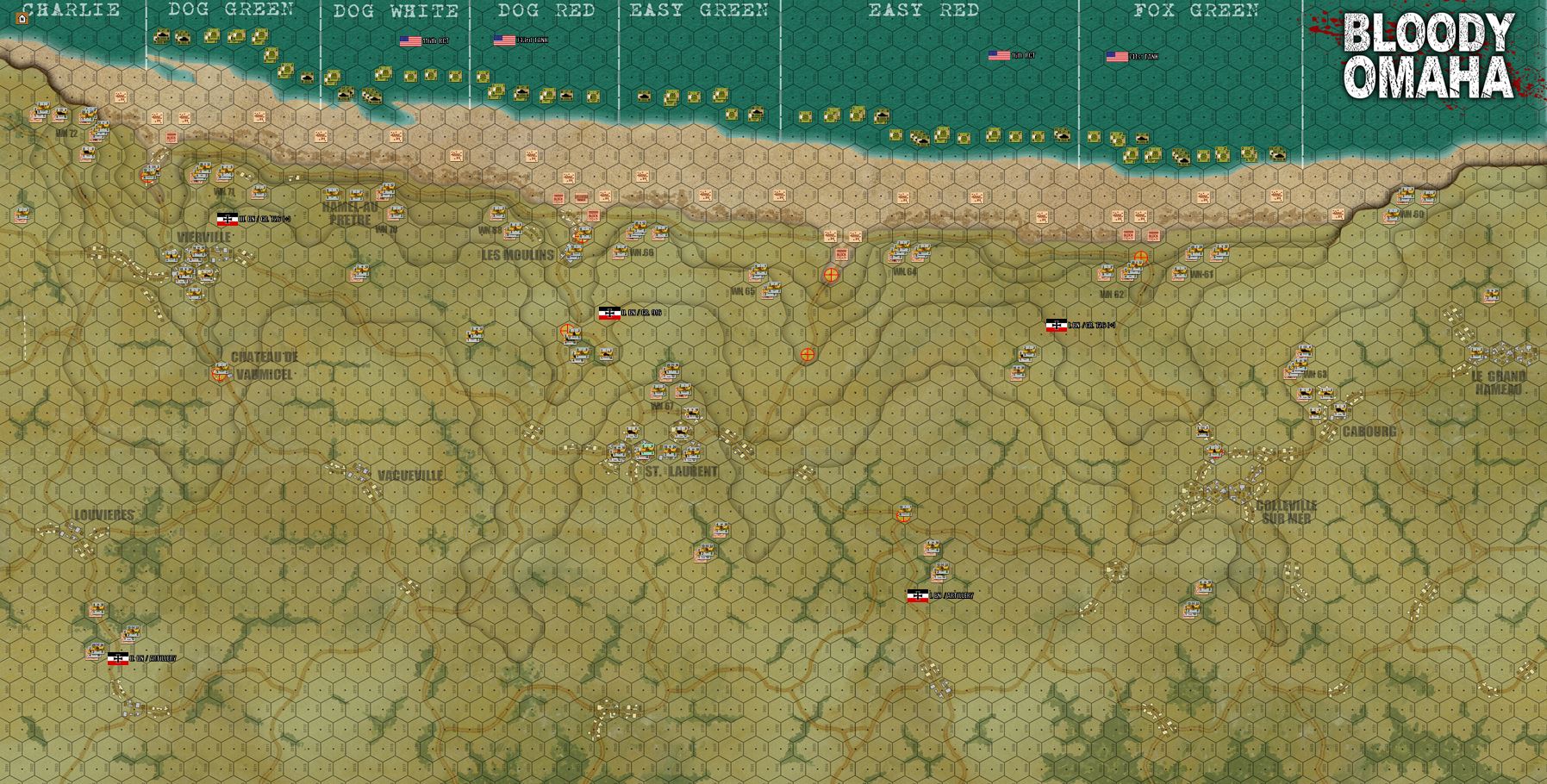
A close up of what I’m sure will be the bloodiest sector of a very bloody beach, Dog Green and Dog White, the right shoulder of the Omaha assault zone.
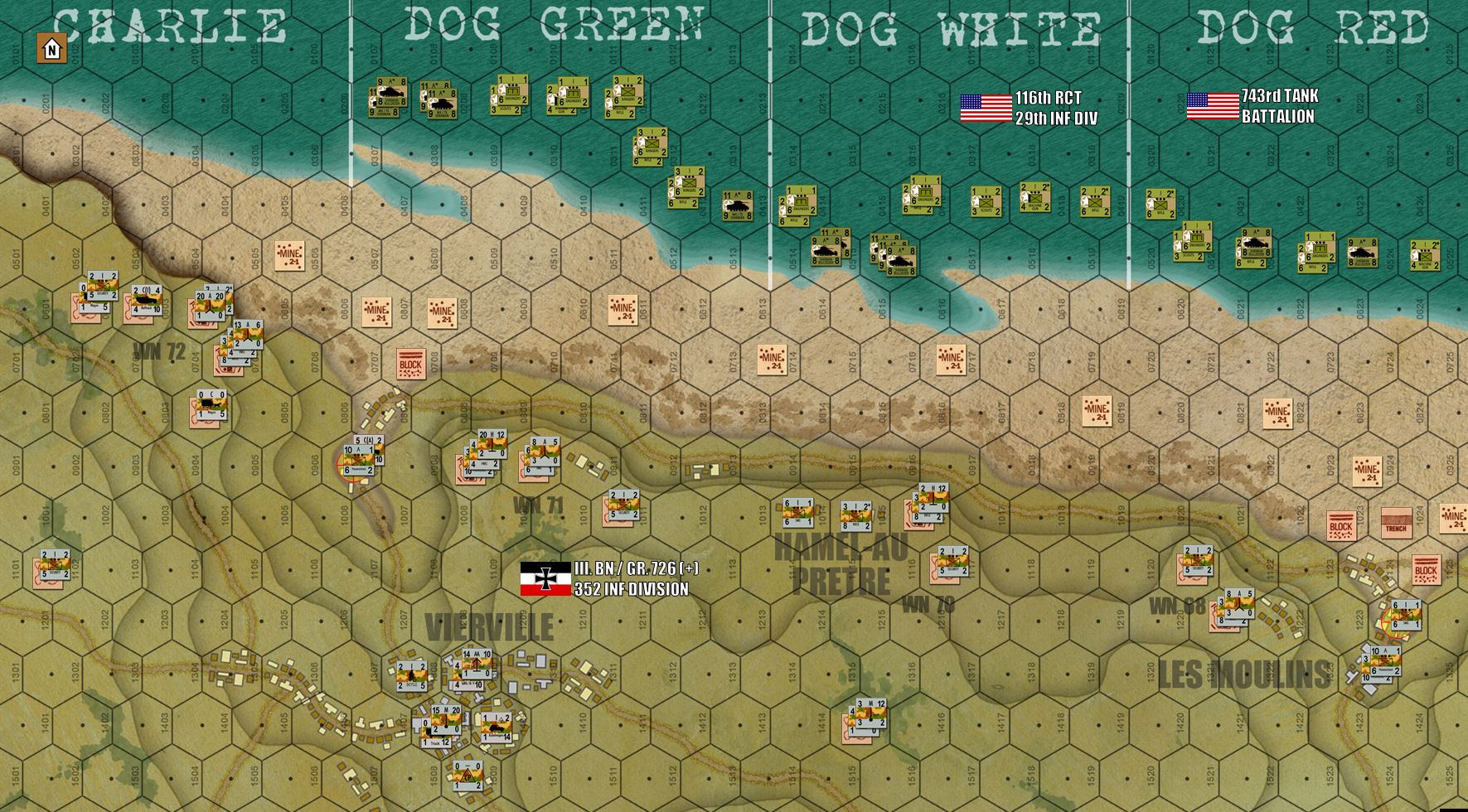
THIRTY SECONDS! GOD BE WITH YA! A detail of the initial landing waves of Dog Green and Dog White. Note the “Ranger” counters in Dog Green. This is “C” Company, 2nd Ranger Battalion, “Captain Miller’s” unit in Saving Private Ryan. They went in with “A” Company, 1st Battalion, 116th Regimental Combat Team at the mouth of the Vierville Draw. Well, you’ve seen the movie. The reality was horrifically worse. MOVE FAST, AND CLEAR THOSE MURDER HOLES!
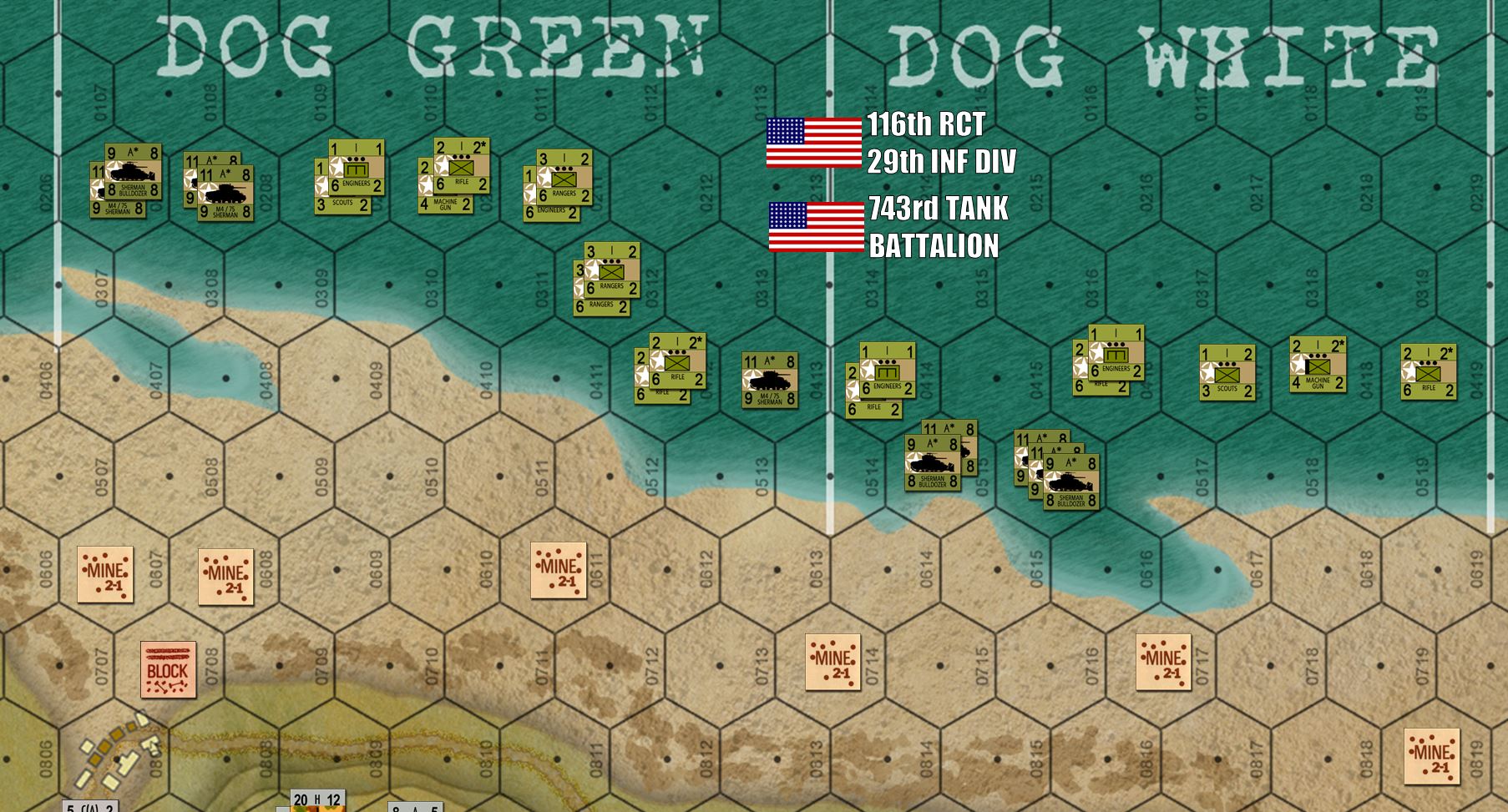
German defenses at the mouth of the Vierville draw. Now 726th Rgt was originally a “second rate” unit, part of the 716th Static Infantry Division. But since March they’d been attached to the hardened 352nd, reinforced and re-equipped, and trained largely to 352nd’s standards. Furthermore, elements of 352nd had been moved up to reinforce them (916th Grenadier Rgt, specifically). Still, you’ll notice that many of the German platoons are still the weaker 2-I-2 “Security” platoons rather than the “3-I-2*” Rifle Platoons. Nevertheless, only the fact that the Americans get another whole wave just like this one every other turn for at least eight turns, plus massive destroyer, cruiser, and even battleship gunfire support (USS Texas), plus massive air support, even gives them a sliver of hope.
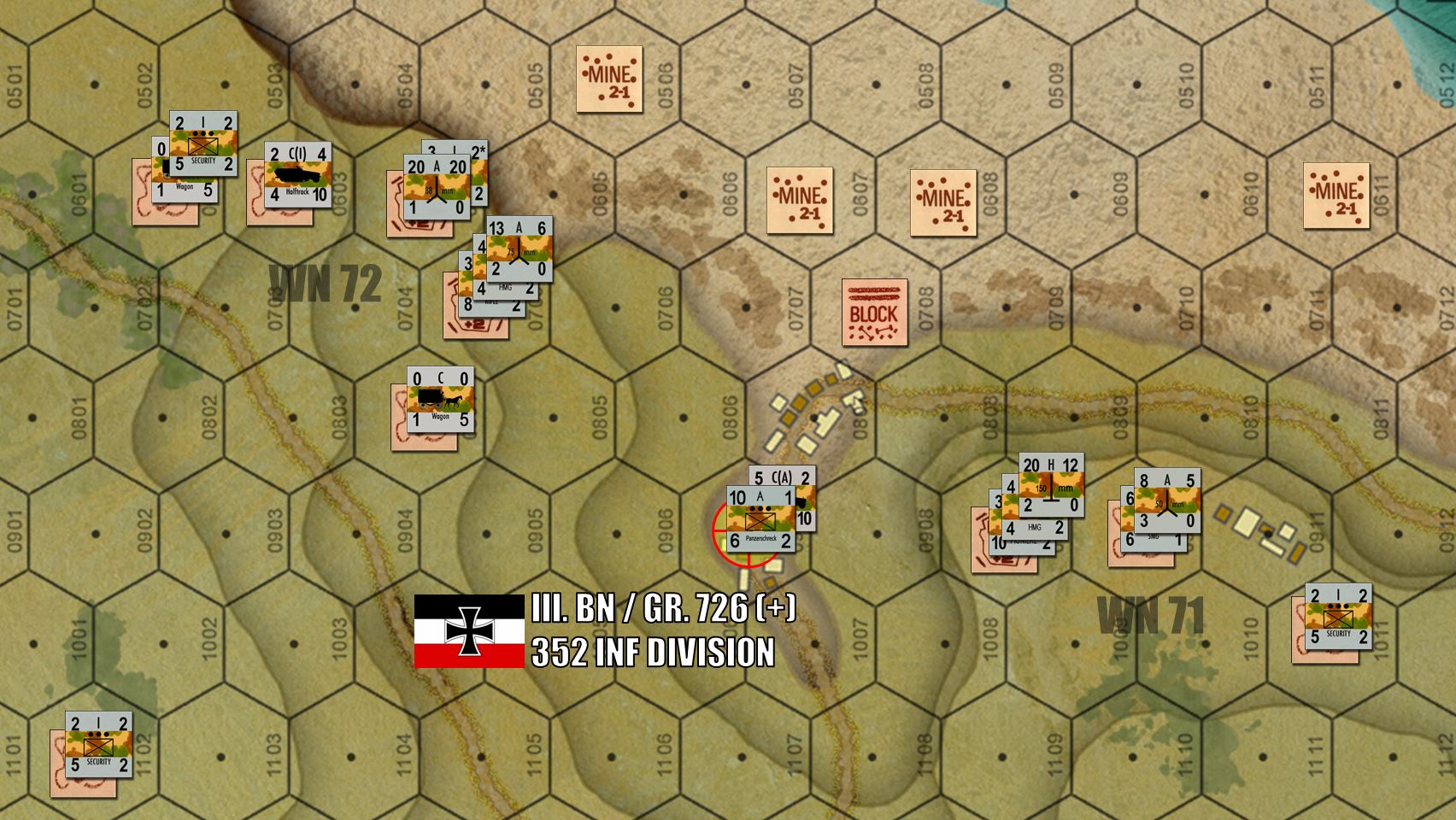
Things might go a little easier in 16th RCT / 1st Infantry Division’s sector over in Easy Green and Easy Red.
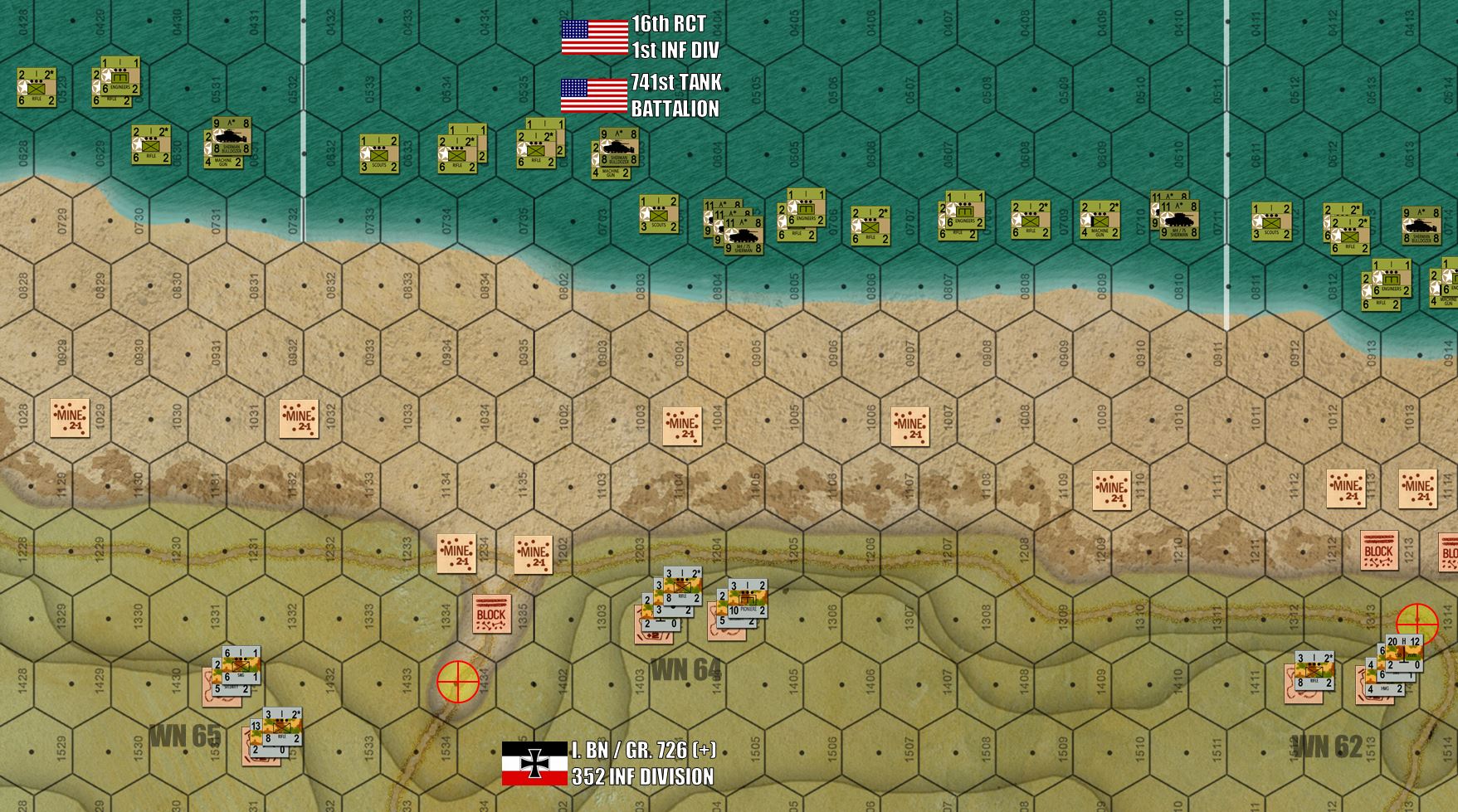
German defenses are actually extremely brittle. When you make up German units as they actually were, and try to deploy them along a battlefield of the proper scale, you realize how thin they were. True, 352nd Division was reinforced, but they were also expected to defend 33 miles of beach, an absurdly huge frontage for a single division in the field. Here is the limit of their reserves. Couriers on bicycles, empty trucks and horse-drawn wagons, flak troops, and so on. There are some nice regimental 12.0 cm mortars back here, along with the 10.5 cm howitzers of I.Bn/Artillery Regiment 352.
 June 27, 2019 at 5:07 pm #1409133
June 27, 2019 at 5:07 pm #1409133Thanks for the reply @jamesevans140
Luckily for the Russians the T-60 and T-70 could be built in any factory – yes, they were very common tanks, and the T-70 remained in service until at least mid-1944, possibly afterwards, and that’s not even including the SU-76.
The only issue with the 45mm is the range, which is definitely a problem in games like PanzerBlitz 1941 and 42, and even 43 when the T-70 is still in service in huge numbers at Prokhrovka. The compression of ranges, and the difference between ranges, I feel is always a problem in miniature wargames involving tanks, artillery, or really any combined arms doctrine. So I know how poor they were, I know how poor they perform in PanzerBlitz (unless the German player is really accommodating and gets within 300 meters or so).
Then again, against German 3.7cm guns, there’s no issue. even the 5.0cm L42, the range differential on an open steppe isn’t too bad, if you don’t mind taking “Soviet style” casualties in a rush. The isolated successes T-70s would have against even Panthers, however, all happen (as you suggest) when the T-70 is in an ambush position.
T-34s are over worked meaning that if you move and fire a tank it has an additional +1 to its score need to hit. The same rule applies to Crusader IIIs, any tank where there are only two men in the turret and the commander has to act as the gunner as well. One of the neat small rules about FoW I found at the 2017 boot camp.
The German Army that I have under the command of Paulus – Another issue 6th Army had was it was being stadily drained of panzer formations in favor of Hoth’s 4th Panzer Army and Kleist’s 1st Panzer Army, especially once Army Group South was divided between Army Groups A and B halfway through Blau. But this might be after the time line in the scope of your project.
My Panzer troop battalion has been collapsed to 2 near strength platoons. A battalion reduced to two platoons? Holy hell, you really ARE understrength! 😀
You have probably detected words not normally used in FoW but processes had to be added to re-fight this battle. – I dunno, I heave seen lots of players use FoW in intensely historical settings. I think it’s down to how the players choose to use the system (historical play vs. tournament play), and why I can never completely write the game off entirely.
My only issues come with the interrelationships between range, scale, movement … the “3D physics” of the battlespace in which units don’t behave realistically – unrealistic tactics and methodologies are rewarded – realistic ones don’t work – and even the realistic ones used to be invoked simply by quoting a specially-named rule in an appendix somewhere (Infiltrate, Jumbo, Spearhead, etc).
All that said, big improvements have been made in v4 with not what was included, but what was taken out of v3. I know we may differ on this, but it was in pruning a lot of this material out that I feel v4 makes the big improvement. Logarithmic scaling and the new updates to artillery effects help as well.
If he opens up his T-60’s upon my infantry he will be rolling 60 dice of MG fire power turn. So I guess FoW counts to 20mm autocannon as an MG? Or can it be used against infantry as a MG and armor as a light cannon?
My infantry regardless of how they are dug in are going to evaporate in very short order. I always beat this drum, I’ll beat it again. German infantry should have a battery of 7.5cm infantry guns at the battalion level, 15.0cm infantry gun at the regimental level, My point is, IGs (especially those ugly little 7.5s) are extremely common, almost as common as 8.0cm mortars, and would easily make a direct-fire mess of a little lawnmower like a T-60. A great unit, and exceedingly historically accurate and plausible as well. Yet for some reason always overlooked in infantry mini armies. In service since before Poland and often pulled by a horse team if you don’t want to get too mechanized in a Wave 4+ Infantry Division.
That really interesting stuff about Timoshenko. I certainly knew his star was falling in 42, I just didn’t know the details.
A few weeks ago I got @timp764 to sit down and watch the Soviet Storm episode on Rzhev. There was another Russian documentary on Rhzev by a journalist who took a very hard eye on the topic. Definitely pre-Putin. Now the documentary is no longer on available. Shocker.
I sometimes get a kick out of watching the Russian-language (original) “Soviet Storm” with subtitles, and the English translation videos. Yeah, there are differences. The English translation does not match the Soviet one in many places.
Now he is just starting to understand that anything to do with the Eastern Front you get a free upgrade to super sized. Like I used to say in interviews with John and Justin: “Just imagine the worst battles on the Western Front. Now add a couple of zeroes to all the numbers …”
That is how he looks at them from a perspective of someone like himself who is trying to take his first serious look at the Eastern Front from a wargames point of view. – It’s going to ruin him for the rest of World War II! 😀 😀 😀
June 28, 2019 at 6:49 am #1409243First up @oriskany, yes there is something seriously wrong with you. Your a Wargamer.
One thing I noticed when playing mega D-Day was the German defence. It reminded me of German defensive tactics on the Eastern Front in winter in a number of ways.
Units are spread out in pockets that are supposed to be mutually supportive but are on a frontage many times larger than the frontage normally assigned to a unit of this size.
Hitler in his usual way thinks it worked in Russia so I will ask even more of it, without understanding why it worked in Russia. Firstly in Russia it only worked just by its finger nails. It was operated by veterans with the highest level of training. I.e. you could take a sub unit from one unit and place it in another unit, even if it is a different type and it would all work seamlessly. The soldier was trained for this. In this respect Hitler never appreciated or understood what he had in his early war soldiers.
So in Normandy he used even larger frontage with 2nd rate troops never trained for this. He does not provide nearly enough fire brigade units to cap break throughs on this thin depth of defence. One big issue was the divisional flanks in that they are badly blurred and smudged up like a finger painting. This creates a zone in which no-one is sure who is in charge of who and where does the supply come from. This actually slowed down play in the mega as players tried to sort this mess out. We mostly played a single breach our sector. We found it was better to play beaches in a number of sessions that had sleep between them. The amount of silly mistakes that crept in because of lack of sleep. Even having two or more people on the same side did not prevent this.
Given the amount of sleep the commanders at Normandy were getting the silly mistakes might actually be realistic.
So the board is set, any idea when the pieces start moving?
I certainly look forward to watching it happen as I brings back many memories of sleepless weekends. I still don’t know how we did this and turn up for work on the Monday.
I like that fact that today it is played out on the PC. This saves many hours of setting up and packing away that would have to be done if played with counters on map. Recording where each counter was, was a pain.
June 28, 2019 at 2:13 pm #1409466Oh, it’s started, @jamesevans140 . Turn One was last night and took 90-120 minutes.
I don’t know how much I’ll be double-linking (posting in the projects page and then linking here). There’s going to be a lot, plus I’ll be making part two of the video for Valor & Victory Vietnam Special Forces game we had live with @stvitusdancern last week.
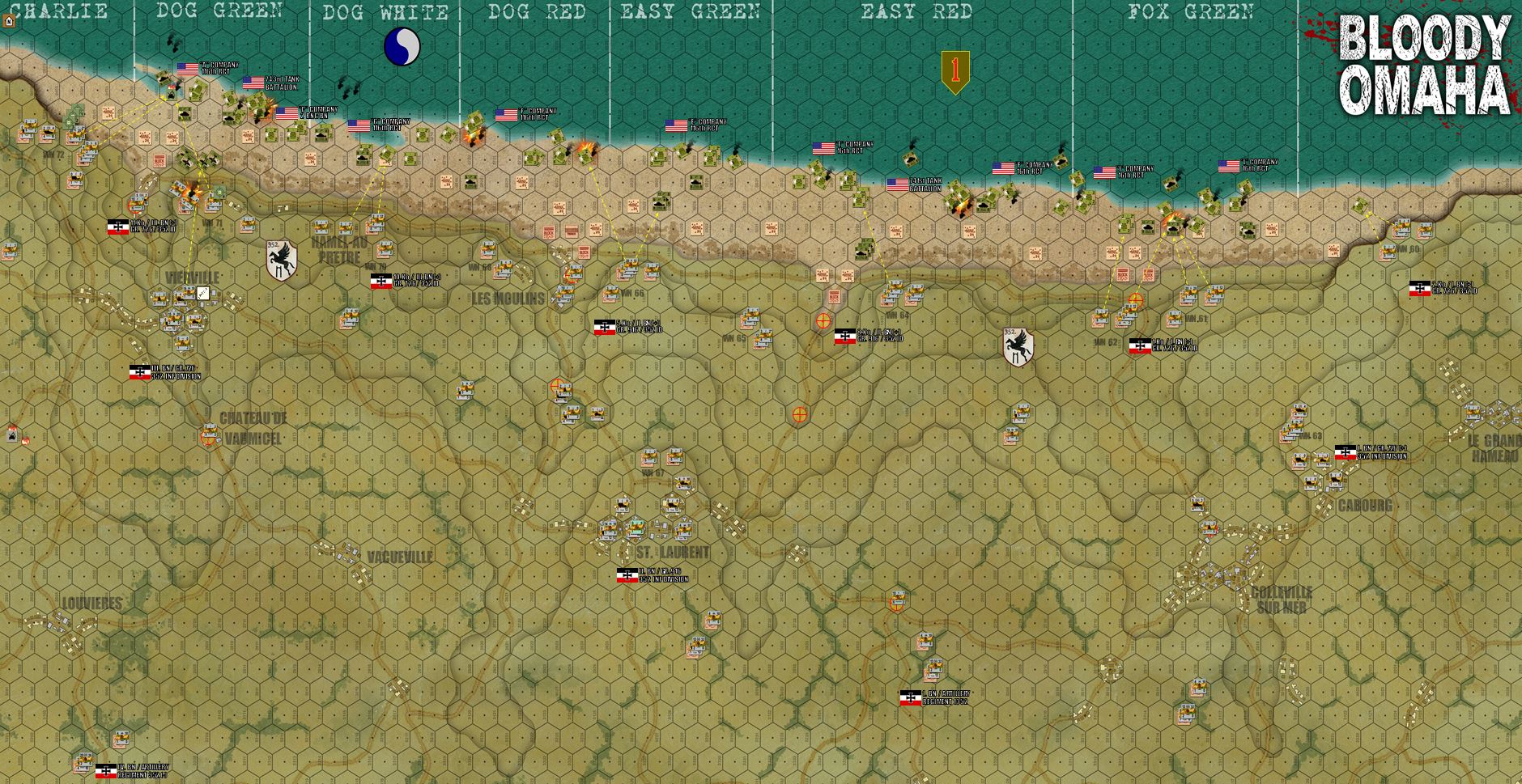
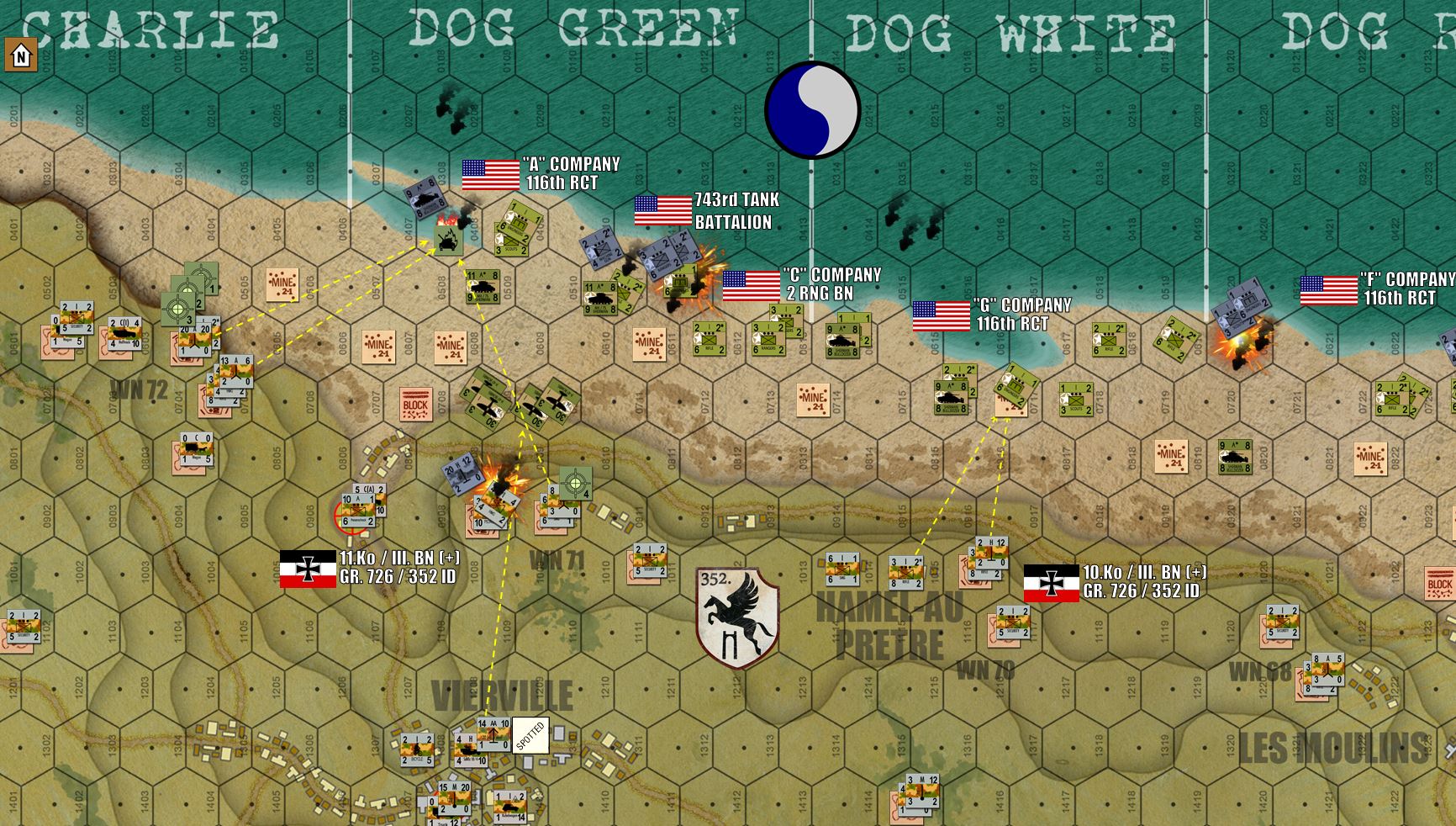
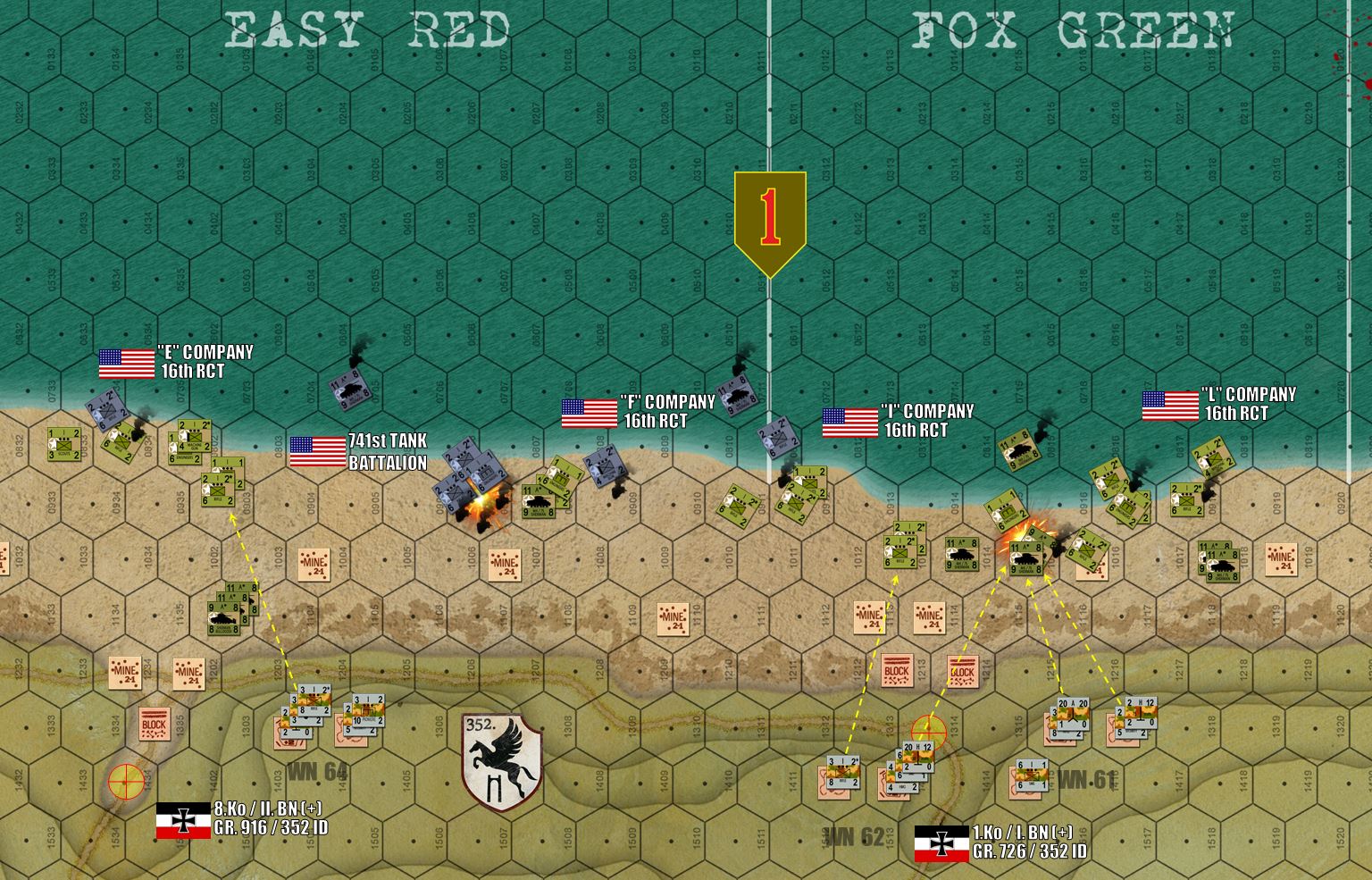
Part One of Valor & Victory Vietnam Game:
June 28, 2019 at 4:31 pm #1409494352 Infanterie Division was only formed in November 1943 at St. Lo, from the inactived 321 Infanterie Division cadre with most of its recruits from the 1925 and 1926 classes. It had considerable problems in regards training and by March 1944 it had only conducted three firing exercises and troops had only thrown two training hand grenades.
It was hampered by spending so much time on construction work on the beach defences. In average the recruits spent nine hours per day on building work.
June 28, 2019 at 8:16 pm #1409522Thanks for the reply, @piers ~
The question of quality for the 352nd was a big issue I honestly fought with for quite a while building this scenario. Sources were all over the place as, well, the data is all over the place. 😀
I’m sure you already know all this, so I’ll keep it quick for others in the thread:
- Agree – most of the more recent recruits were 18 and 19 year olds. But that’s the age you’re supposed to be as an infantryman. As opposed to units like the 716th, 711th, or 709th, where the average age was somewhere in the 30s (decrepit for an infantryman).
- Three live fire exercises and two “training” hand grenades? That’s what most armies get, at least in recruit training and initial infantry school, unless by “training” grenades you mean non-explosive grenades.
- I would agree the training for the INTEGRAL regiments of 352. ID was hampered. From what I read, a lack of fuel was a real factor here.
- Raised from the 321st, yes, a division that had done nine months in Russia. Now I doubt many of the new recruits were in Russia (unless the Germans sent them there at age 16), but many of the platoon- and company-level officers and even more importantly, the NCOs might have had the benefit of some that that experience.
- Spent most of its time building … here is where I ran into some confusion during my construction of this scenario. When 352.ID was moved up into Grandcamps sector (broadly speaking, Omaha), it “absorbed” units like the III./726th IR. and elements of I./726th IR. From 716th Infantry Division. Now these guys CERTAINLY, these are the 30+ year old reservists, former wounded, etc., who’ve spent the vast majority of their time building bunkers and beach obstacles for the Atlantic Wall. From what I can see, though, once 352. ID became responsible for their training and armaments, things rapidly improved. Certainly not enough to get them up to 352. ID’s integral level (i.e., Regiments 916 around Omaha, 914 further west, and 915 w/ KG Meyer in LXXXIV Corps reserve).
- Now the majority of the “352” units that actually fought on 6 June were from the attached 726th IR., so in that sense, yes, these guys had spent the vast majority of their time building and combat training suffered as a result. I just don’t know if I would include 352’s integral regiments in that summation (GR.’s 914, 915, 916).
- I have reflected this difference between integral and attached 352 constituent units in the scenario with 10. and 11. Kompanie / III. Bn / 726 IR., by building them understrength with a 5-4 mix of “Security” Panzer Leader infantry platoons, and reduced battalion support assets.
- Units like 5. and 8. Kompanie / II. Bn / 916 GR. (extended eastward toward St. Laurent) are built with a 6-3 mix of “Rifle” and “Security” platoons, making them markedly better but still not full “parade ground” order of battle.
- Finally in the far east past Colleville we’re looking at 1. and part of 2. Kompanie / I Bn / 726 IR., again at the lower level.
- But these are still better than the “pure” static infantry divisions like 716th we see at Gold (almost all Security platoons) and especially really sub-par constituent units like Ost Battalion 441 (all Security platoons, and not even the full number for a “German” battalion).
- So no, as a 13th Wave Division, and hardly full strength, given reinforcements which actually might have been more of a liability as Division HQ now had to train, equip, and feed them, and (again) stretched across 33 miles of front … 352. ID was hardly top of the line.
But compared to everyone else in the area, at least on that initial day? I think this is where it gets it reputation as the “iron men of Normandy,” which I agree wasn’t really true.
By the way, as long as I have you here … I’ve been finding mentions of a battery of Werfer Regiment 84 attached to 352. ID, but my sources are not saying WHERE this battery was deployed on the morning on 6 June. As much as I love nebelwerfers, the Americans are already being creamed by too much German artillery so I have NOT included them, erring on the side of caution if nothing else. Ever hear of this? Were they with KG Meyer, or over by Gold Beach? I ask because I remember that great KG Meyer game you included In our WWDDC project a while back.
June 29, 2019 at 12:52 am #1409571Yes… a few Ost veterans… but everyone had some of them! 352 was the best of a bad bunch. Certainly better than the ‘Stomach & Ear’ battalions of 716.
All the beaches had covering rockets, but mainly frame launched Wurfgerät 40s fired by infantry units. If I remember correctly, US Intelligence after the battle noted Omaha had 38 firing pits, each housing 4 rockets all set to bear on the beach.
WN 67 was a simple position designed to accommodate the firing position of a multiple rocket launcher battery at the head of the Moulins Draw and was similar to that near Tailleville in WN 23 on Juno and was armed with 38 32cm Wurfgerät and crewed by men from Werfer Regiment 84 who are believed to have arrived ahead of the brigade.
WN69 showed tell-tale scorch marks on the ground from Wfgt40s being fired from frame launchers.
However many engineer reports note that the cables from the launchers to the control boxes were severed in the bombardment.
Werfer Brigade 7 seems to have been split up as supporting batteries along the area and also to have designated men to crew positions and it seems likely act as technical and training assistance for the infantry units with frame launchers. Although its stated it didn’t arrive in the area till 6th June, Werfer Rgt. 84 was at Beauvais on the 18th May, which is still a good distance from Normandy.
Werfer-Regiment 84
I. Abteilung
1.-3./84 = 6x 15 cm Werfer each
21./84 = 8x 15 cm Panzerwerfer 42
II. Abteilung
4.-6./84 = 6x 15 cm Werfer each
22./84 = 8x 15 cm Panzerwerfer 42
III. (schw.) Abteilung
7.-9./84 = 6x 30 cm Werfer eachThe Gliederung of 716 ID dated 1st May 1944 notes 21 sWG 41 as bodenständige weapons. These were the 28/32cm steel frame launched rockets.
-
AuthorPosts
You must be logged in to reply to this topic.


































